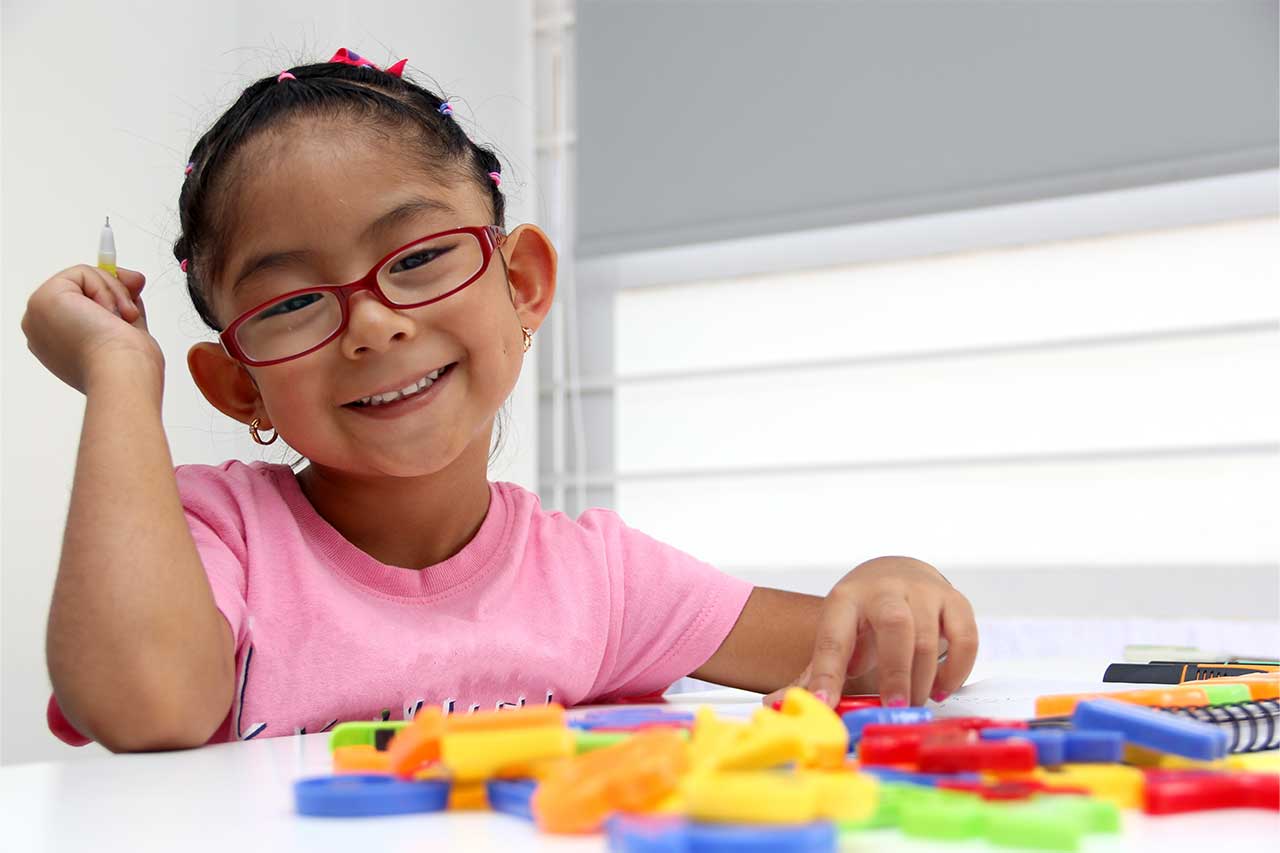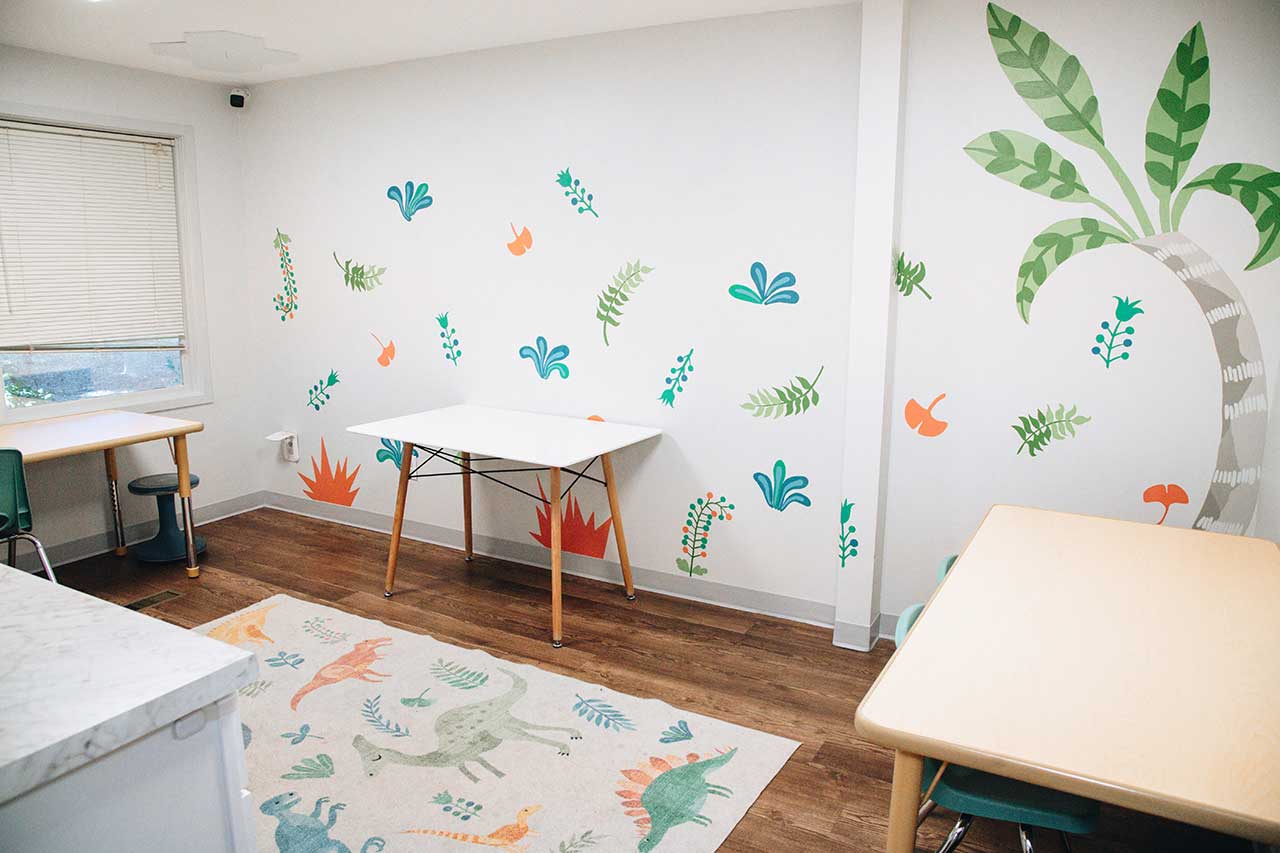BRIDGES Magazine
Vol 2. Spring 2024
Vol 2. Spring 2024
Our goal is for learners to increase their autonomy and confidence in a fun and individualized environment that is set up to offer frequent teaching opportunities and peer interactions.
Learners are offered opportunities to cook and prepare meals, complete household tasks such as laundry and cleaning, and participate in group projects and crafts such as gardening and painting. There is a focus on self-advocacy as well as identifying and communicating emotional states while building peer relationships through naturally embedded opportunities.
Access to Technology in the ADL Program
In today’s world, technology has become integrated throughout our entire day. From our phones, email, calendars, and leisure activities, technology is embedded into so much of our daily lives. The ADL program has opportunities for learners to increase their skills by utilizing a range of technology and daily STEAM activities. Some of the newest tech program highlights include an intro to basic computer skills such as typing your name, dragging and dropping icons, and using a touchpad on a laptop. Navigating touchscreens is also an important part of our daily lives – think about how often you sign your name on a touchscreen device! Touchscreen devices in the ADL program are introduced through the laptops used during group circle/hangout times as well as smart boards that offer a range of programs to practice.
The ADL, older learner program at ABTA’s University location in Charlotte has officially launched! The program features a brand new, fully functional kitchen, mock bedroom including a washer and dryer, as well as a lounge area with a ping pong table! The program is currently accepting full and part-time learners in both the ADL01 age group (8-13 years old) and ADL-2 age group (14-young adults). If you are interested in learning more about the ADL program at ABTA’s University Location in Charlotte, contact us!
So often people are turning to videos as examples of how to do something or solve a household problem. Practical life skills using technology are developed in the ADL program by following the steps of a do-it-yourself (DIY) video. This skill is developed during a designated craft time at least two days per week. Learners can develop critical thinking and problem-solving skills by initially determining which materials are needed to start the craft activity. Identifying what materials are needed to start a task is an important life skill that can be generalized to the home and community settings as well. Following DIY videos is a skill that can be worked on to learn a new cooking recipe, STEAM activities, cleaning with different tools, fixing everyday items, or completing a household chore. Looking up a video model can also be a great way to teach a new skill or expand on an existing one within the home setting.
The ADL, older learner program has increased its inclusion and access to science, technology, engineering, arts, and mathematics or STEAM activities. STEAM includes encouraging and providing opportunities for learners to think critically and creatively through hands-on activities and problem-solving.
Choice boards are frequently used in the ADL room to include the learners in making decisions about the activities they engage in. STEAM choice boards include science experiences, creating a sensory tool, creative ways to make a building or structure, and creating a functional robotic feature out of everyday items.
STEAM activities are designed to be hands-on, exploratory, and creative, and teach a variety of functional skills such as common tool use and following multi-step directions.
Developing meaningful, engaging, and preferred leisure and recreational activities is an important part of life. During free time, it’s important that we can initiate, access, and engage in activities that are enjoyable and preferred. In order to develop leisure and recreation skills, such as coloring, drawing, or editing a picture, or playing a game, learners work on identifying their lives and dislikes. Preference, and expressing likes and dislikes, are developed throughout each learner’s day and across a variety of settings within the ADL program.
During group circle and hangout times, learners are presented with visual choices of “would you rather” or “this or that?” Pictures to work on expressing their likes and dislikes. Learners also have the opportunity to utilize choice boards and a leisure/recreation cart with a variety of options to explore during breaks or when finishing an activity early. Developing and communicating preferences is an important skill that includes advocating for what you like and don’t like. Leisure skill activities have expanded to include ping pong and a Nintendo Switch at the University location and often incorporate opportunities to work on social skills in a more natural setting.
The ADL program values and relies heavily on the input of caregivers so that learners are engaging in the most meaningful activities. The goal for each learner is that the skills learned in the program can be generalized to the home setting. Staff works to foster independence and increase learners’ confidence with the many tasks they engage in throughout their day. Families are always encouraged to share what is most important to them and what area within independent living skills they want to focus on.
Expressing preferences is an important life skill and is often how we form friendships based on common interests. Developing and communicating preferences looks different for each individual and initially may require support such as visuals, presenting things as “this or that” or holding up two objects or foods and seeing which one your child reaches for. Presenting choices is a great way to support your child in having more control over what they access and helps establish likes and dislikes. When your child, teen, or young adult clearly likes something, you can model language that communicates that such as “I like ____” or “____ is my favorite.” Similarly, if your child shows a clear dislike of something you can model language that they do not like what was presented such as “I don’t like this.” Once likes have been established, it is helpful to facilitate opportunities for your child to communicate what they like to as many people and across as many settings as possible.
Ideas for developing preferences across areas: you can use phrases ranging from short to more complex such as “which one?”, “what do you like?”, or “which one do you like better?”
To increase your child’s independence in the home, you can start with daily chores that are part of your family’s daily routine. Washing dishes after dinner time can be used to teach important skills such as: following 1-step instructions, staying on task, and doing a task in an orderly fashion. You can also model washing dishes while labeling what you are doing such as “I’m washing the plate” or “I’m using a sponge to wash the forks.” If washing dishes is a brand new skill for your child, try having them do the first or last step of the dishwashing process to start or finish the activity. Any participation is a great place to start!
Cooking skills are developed in our ADL programs and across cooking activities. During lunch prep, some of the learners have learned to safely use food heating equipment such as the microwave and an air fryer. Learners are also given a recipe three times a week to prepare a snack or lunch. At home and as a fun activity to do together, you can use downloadable visual recipes such as pictures in easy-to-follow steps to make a favorite meal or drink.
A great resource for visual recipes is accessiblechef.com. You can also find a video online with clear steps to make simple recipes such as mixing lemonade, making a fruit wrap, or spreading cream cheese on celery or another preferred food. Try pausing the video as you go to follow one step at a time.
CHARLOTTE EVENTS:
AND BEYOND!

